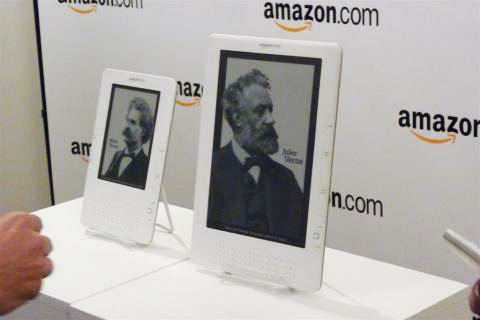Revisiting the ROI of the Kindle DX: Why is Amazon blind to Wi-Fi?

Amazon unveiled its much hyped Kindle DX, an e-book with a 9.7-inch screen designed to raise a ruckus in the textbook market, but delivered a $489 curve ball that seriously alters the return on investment calculation for academia.
On the surface, the argument for the Kindle DX (Techmeme) in academia holds somewhat but that price tag makes the case much harder for your average student. Amazon is asking students to learn a little about total cost of ownership over three years before they pick up a book. What is this? Enterprise software?
Also see: Special Report: Kindle DX
Gallery:
Add it up and the average student is losing money on the Kindle DX in that first year. Let's say Amazon can halve your textbook costs to $250 a year you'll still be shelling out nearly $750 in year one.
Over two years, a student will still be behind on the Kindle DX return. Going the paper route on textbooks yields a two-year cost of $976. But the Kindle still runs you $13 more over two years.
In year three, that student will start saving money via the Kindle ($1,464 on paper textbooks vs. $1,239). The big caveat here: I didn't include the used book market and assumed that the Kindle DX still functions well. Another big assumption: All the textbooks you'll need will be available on the Kindle (not likely). If Amazon can cut a student's textbook costs to $100 a year, the case for the Kindle DX would obviously look better.
In a nutshell, Amazon is trying to make a four-year total cost of ownership case to an audience that just doesn't have the attention span. So-called "super seniors," or those on the five and six year college plans, may find some return.
Books at college can run up to $400 per semester. The Kindle DX is intended to last longer than that, of course, but this is under the assumption that the student won’t break or damage the device quickly and all a prospective student’s material is available through Amazon’s service.
What happens to the return on your Kindle DX if it gets damaged during a close beer pong match?
So what caused Amazon's big disconnect?
Simply put, it is Amazon's love affair with Whispernet, its 3G download network.
In Amazon's statement about the Kindle DX, the company boasts:
Just like Kindle, Kindle DX customers automatically take advantage of Amazon Whispernet to wirelessly shop the Kindle Store, download or receive new content in less than 60 seconds, and read from their library—all without a PC, Wi-Fi hot spot, or syncing. Amazon still pays for the wireless connectivity on Kindle DX so books can be downloaded in less than 60 seconds—with no monthly fees, data plans, or service contracts.
Who cares? The Kindle DX is tailored for students that happen to have Wi-Fi in every campus corner. This miscalculation means Amazon has overpriced its big Kindle---to pay for wireless service---and may leave growth on the table. A cheaper Kindle DX that only uses Wi-Fi is the student ticket. Amazon missed the mark.
Remember this chart detailing where your textbook dollar went?
Now you can include costs for Whispernet.